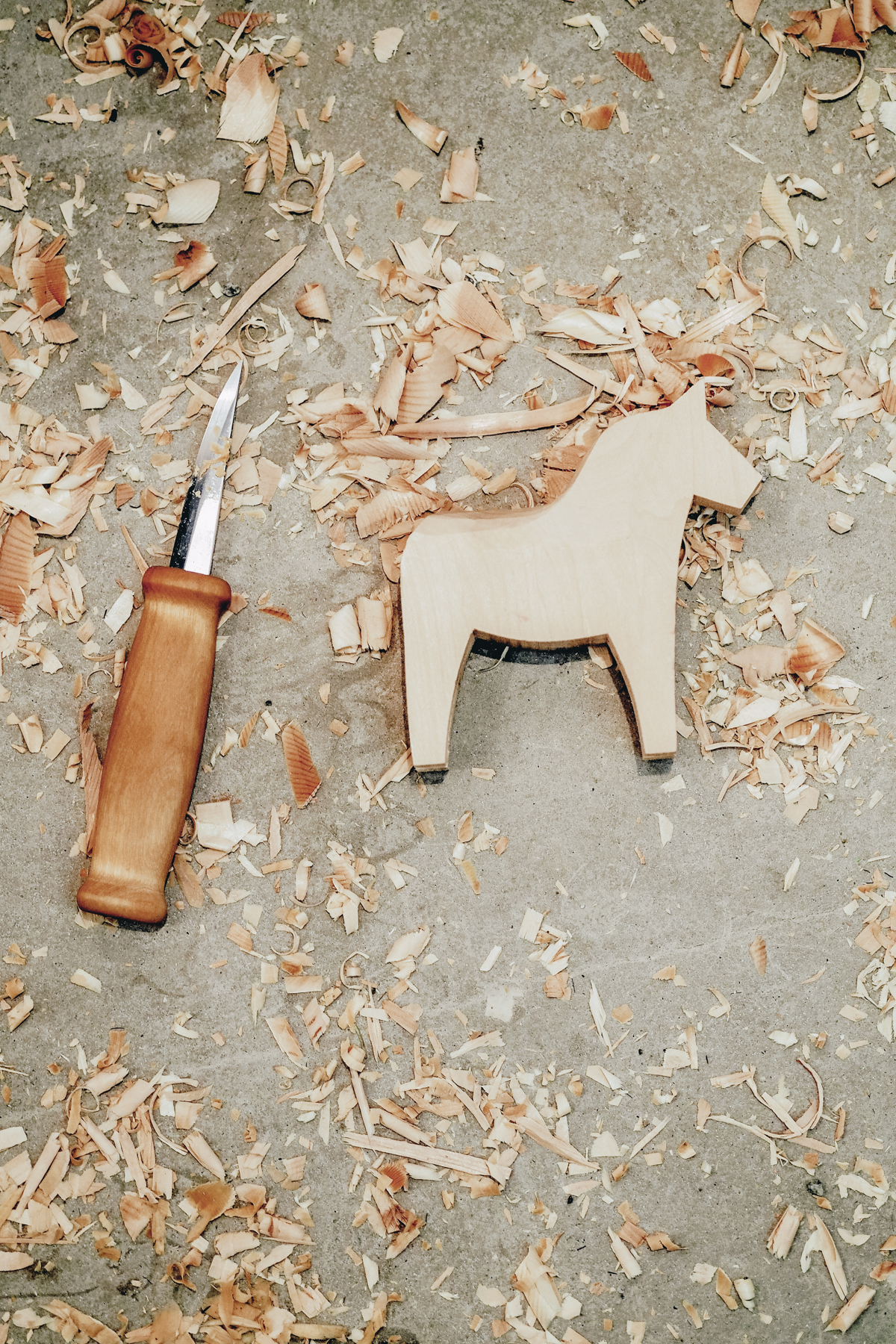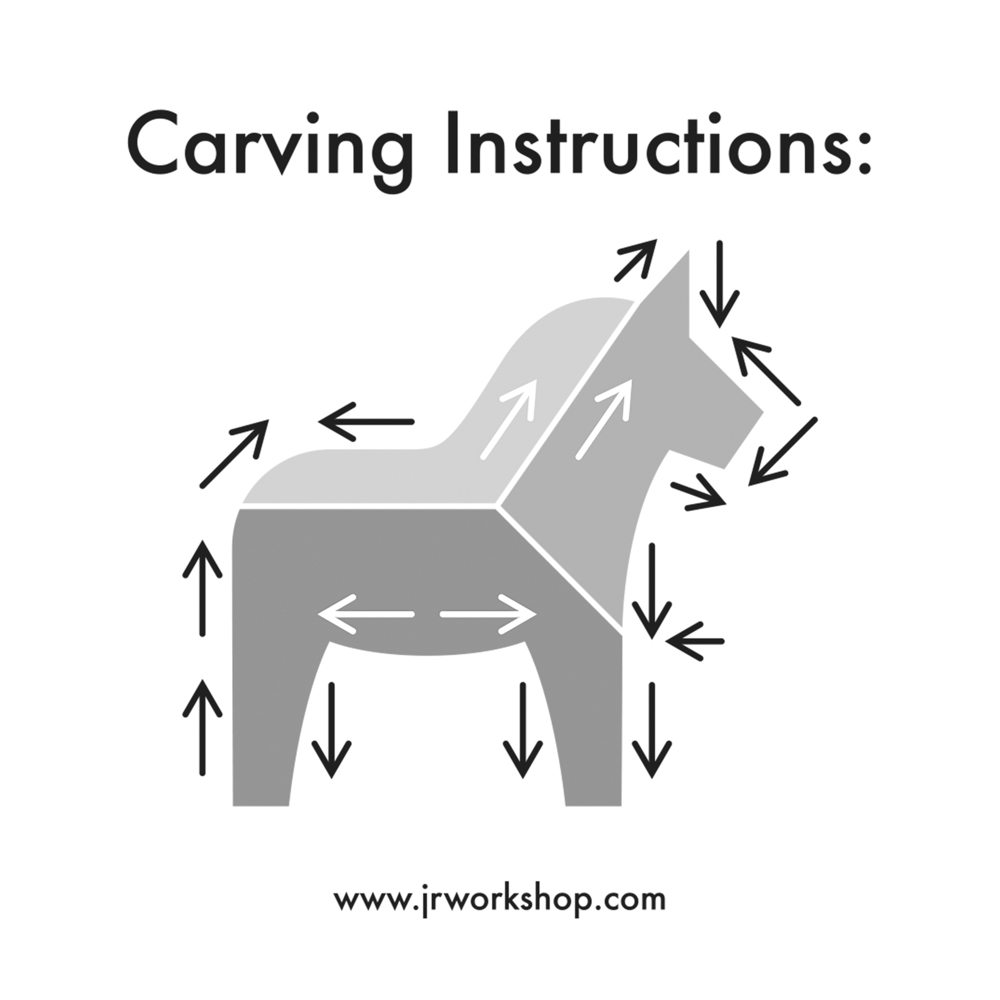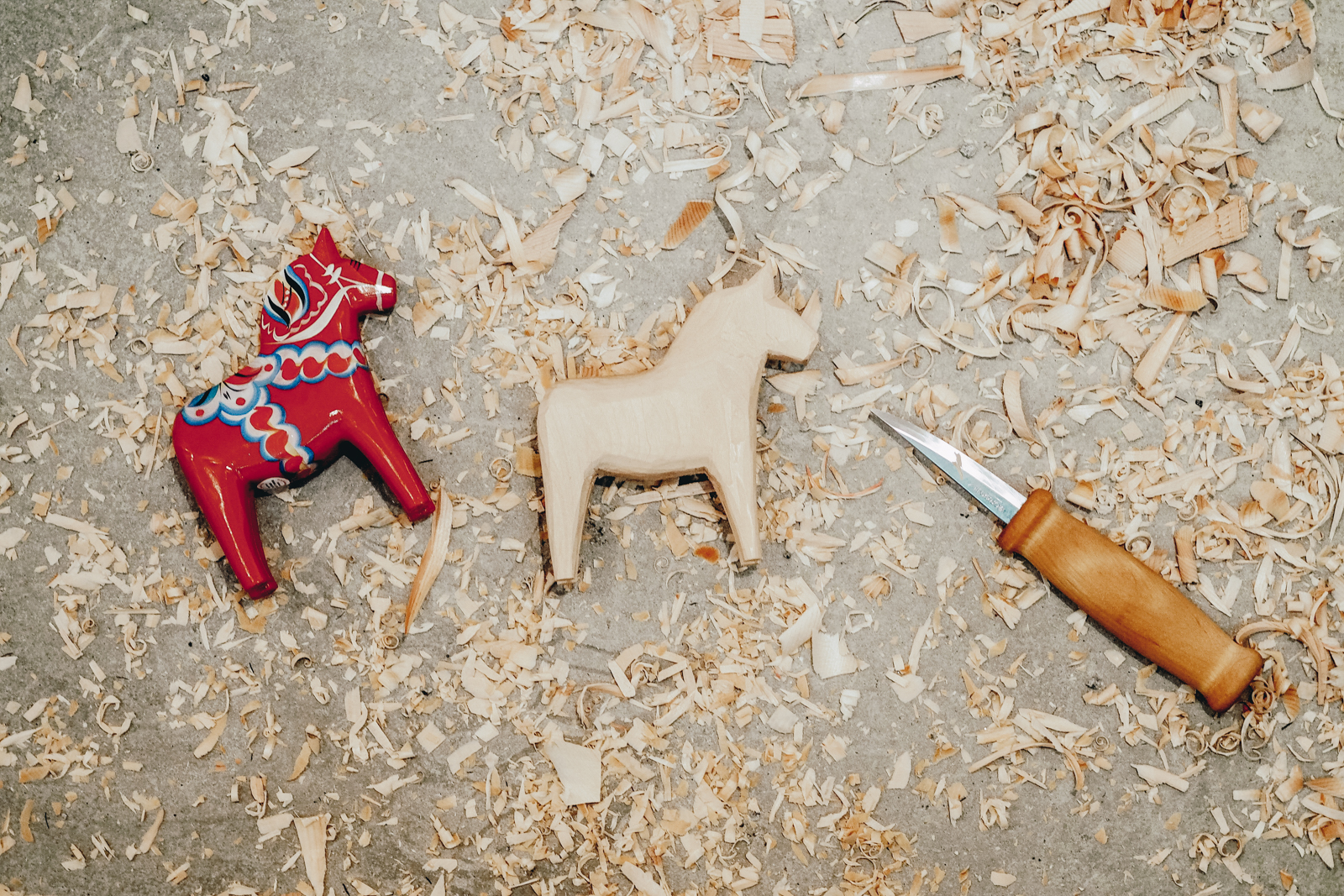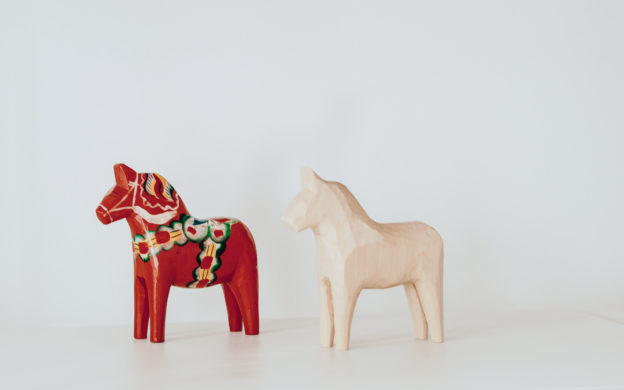The Swedish Dala horse: a classic carved wooden toy that many of us see as a representative of traditional Swedish design. True, it’s a unique and lovely decor piece, but there’s more to the Dala horse than that.
During the 18th century in the central Swedish province of Dalarna (from where the “Dala horse” or “Dalecarlian horse” takes its name), forest workers would take a break from lumber-jacking and relax by carving wood animals. They then took them home as gifts to children in their local villages. These treasured toys were usually made in the form of a horse, as horses were a much-loved and key part of day-to-day life at the time.
In the 19th century, it became customary to paint the Dala Horses in rich colors and floral patterns. This is known as “mug painting,” a practice quite close to the Swedish folk art style known as Kurbits. Workers often used Dala horses as forms of payment for goods and lodging.
The Dala horse was a beloved toy, but they also became big business as demand both in and out of Sweden grew. The sawmills used the wood from slow growing pine forests and cut a basic horse shape freehand using a band saw.
Then, the best local wood carvers would collect bags of these roughly cut wooden horses and finish the carving in the comfort of their own homes; essentially early freelance life in the Swedish forests – they were paid by the horse!
 |
 |
The craftspeople would carve away the sharp edges using an extremely sharp tool called a Mora knife or scout knife. Once finished, the horses were returned back to the mill to be sold.
This is the process that takes place to this day: wood carvers shape the Dala horses at home. The next time you buy a Dala horse, look into where it’s made – obviously there are also mass-produced ones these days – and try to get the authentic versions to help protect this traditional craft.
Acne Jr, a toy company and creative studio based in Stockholm, teamed up with traditional Dala horse manufacturer Nils Olsson during Stockholm Design Week. They hosted a “carve your own Dala horse” workshop using the traditional carving method.
This pop-up was one of their first Dala horse workshops and they may launch another. In the meantime you can buy a carving kit online.
Carve your own Dala horse
This is the fun part!
In your kiou’ll be supplied with soft pine wood in a horse shape, a very sharp knife, band-aid (you might need it) and basic instructions.

Simply follow the direction of the grain, as the diagram indicates. Hold the knife and then turn slightly so that the point is towards you. Then in small motions, shave off areas of the wooden horse. It’s hard at first but you do get used to it. Be careful and take your time.

They say that once you carve off a curl of wood then you’ve got it right. Props to anyone with the biggest curls. The bigger the curl, the better you’re doing.
Once all of the sharp edges are gone, you should see the resemblance to the classic Dala horse.
Now it’s time to choose the finish: raw, monochrome, or traditionally “mug” painted.

I took part in this workshop and made a very rough version of a Dala horse, but I like it. I now have a greater appreciation for the Dala horse carvers, and my own little souvenir to take home. It’s a fun and hands-on way to learn something new, as well as get a taste of the skill that goes into this this beloved traditional craft.
Carve your own Dala horse kits are available from Acne Jr

